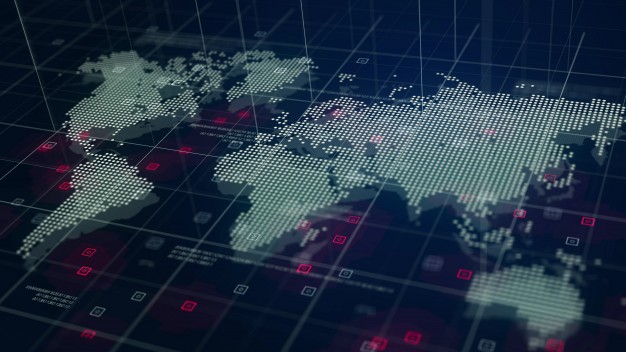Amanda Domingues Science Diplomacy has become a hot topic and has gained traction in academic and diplomatic circles recently. In STS, topics like GlobalHealth and
International Security have received more and more attention in STS circles. Indeed, the last 4S meeting also had an international component, inviting us to reflect on the ways in which STS can be TRANSnational. It was in 2010, after the publication of the 2010 Royal Society report on the topic, that Science Diplomacy gained increasing attention by universities, academic presses, governments, international organizations and the general media in both the Global North and South. For those reasons, the University of Sao Paulo is hosting the Sao Paulo School of Advanced Science on Science Diplomacy and Innovation Diplomacy, an opportunity for students and researchers to learn and discuss how Science Diplomacy is being thought and done in the Global South. The event will run from 21 to 30 August 2019 in Sao Paulo, Brazil and it is open to all. Funding is available for graduate students. You can register here.
Science Diplomacy is a strategy used by political actors to stimulate scientific interactions between nations in order to achieve certain objectives such as strengthening the bonds of partnership, proposing solutions to common problems, and building knowledge (Royal Society, 2010). Science Diplomacy can be classified as what Joseph Nye called soft power, i.e. exchange channels that have the potential to resolve conflicts and organize coalitions, building common interests and values that attract, persuade and influence (Nye, 2009). It is a consensus that S&T were, and historically are important for the construction of hard power, in particular in the well-known military field. The innovative approach of Science Diplomacy lies in treating Science and Technology topics as soft power instruments. Due to the attractiveness and influence of S&T, they can serve as a national global power asset that transcends national interests.
![]() What is Science Diplomacy in practice? They are traditional bilateral, international and multilateral cooperation agreements in S&T; memoranda of understanding and declarations of intentions; investment in technical cooperation and international transfer of technologies; development aid programs, and many other initiatives. These foreign policy actions mirror the main dimensions of Science Diplomacy (Linkov, 2014): science in diplomacy, diplomacy for science and science for diplomacy. Whereas science in diplomacy is about employing scientists as advisors on international issues, enhancing the contribution of science to foreign policy objectives, diplomacy for science emphasizes international cooperation and treats science as a bridge between communities whose political connections are weak (Turekian, 2012). Science for diplomacy, the third dimension, is the strategy of using S&T as instruments to approximate nations politically.
What is Science Diplomacy in practice? They are traditional bilateral, international and multilateral cooperation agreements in S&T; memoranda of understanding and declarations of intentions; investment in technical cooperation and international transfer of technologies; development aid programs, and many other initiatives. These foreign policy actions mirror the main dimensions of Science Diplomacy (Linkov, 2014): science in diplomacy, diplomacy for science and science for diplomacy. Whereas science in diplomacy is about employing scientists as advisors on international issues, enhancing the contribution of science to foreign policy objectives, diplomacy for science emphasizes international cooperation and treats science as a bridge between communities whose political connections are weak (Turekian, 2012). Science for diplomacy, the third dimension, is the strategy of using S&T as instruments to approximate nations politically.
Countries with higher scientific excellence such as the United States and the United Kingdom have been using mechanisms of Science Diplomacy long before the Second World War. Brazil and other emerging countries like China are investing in this type of strategy more recently, especially after the Cold War. Brazil, in particular, is still a novice at articulating its foreign policy and its agenda for science. Some public organizations, such as Embrapa, have been successful in using its scientific expertise for diplomatic purposes and funding agencies have increasingly invested in international cooperation agreements, strengthening the country’s soft power. The objective of the School is, on the one hand, to contribute to the debate on Science Diplomacy and its history and, on the other hand, to promote a learning environment, a space where conversations between scientists and diplomats can take place.
The School is organized in two tracks (Science Diplomacy and Innovation Diplomacy) and will run from 21 to 30 August 2019 in Sao Paulo. The agenda of the Science Diplomacy track is focused on topics in which Brazil has interest and scientific excellence: climate change, Internet governance, cyber security, sanitary and phytosanitary barriers, agribusiness, aviation. It will also host speakers whose expertise is in History of Science Diplomacy, cooperation BRICS countries and with the European Union. Participants will have the opportunity to visit two Brazilian laboratories: Sirius, the 4th generation synchrotron light facility and Embraer’s development center. The Innovation Diplomacy track agenda emphasizes innovation strategies and will explore the role of foreign relations in national innovation strategies, strategies of foreign direct investment in R&D of countries like Brazil and Ireland, and the multilateral intellectual property regime from the perspective of academia and the government. The lectures will also cover topics such as internationalization of technological companies, international technology transfer and ecosystems of international networks of innovation.
Science Diplomacy is a way of using knowledge in bilateral and multilateral interactions with the aim of attracting and co-opting rather than coercing. It has been employed as a strategy that assists diplomats in interpreting technical knowledge, supports scientists in negotiating multilateral projects, and, most importantly, promotes alliances between countries. Science Diplomacy is a field of knowledge that invites an approximation between International Relations and STS. STS can contribute to an analysis of Science Diplomacy actions by offering a micro-level perspective on the interplays between science and policy and by showing how knowledge can never be credible out of its context. Since the intersection of STS and International Relations is quite unexplored, researchers who work at that interface have the potential to make important contributions, elaborating upon and deepening International Relations understanding of the connections between science and policy.
On the subject of STS and International Relations, I recommend:







